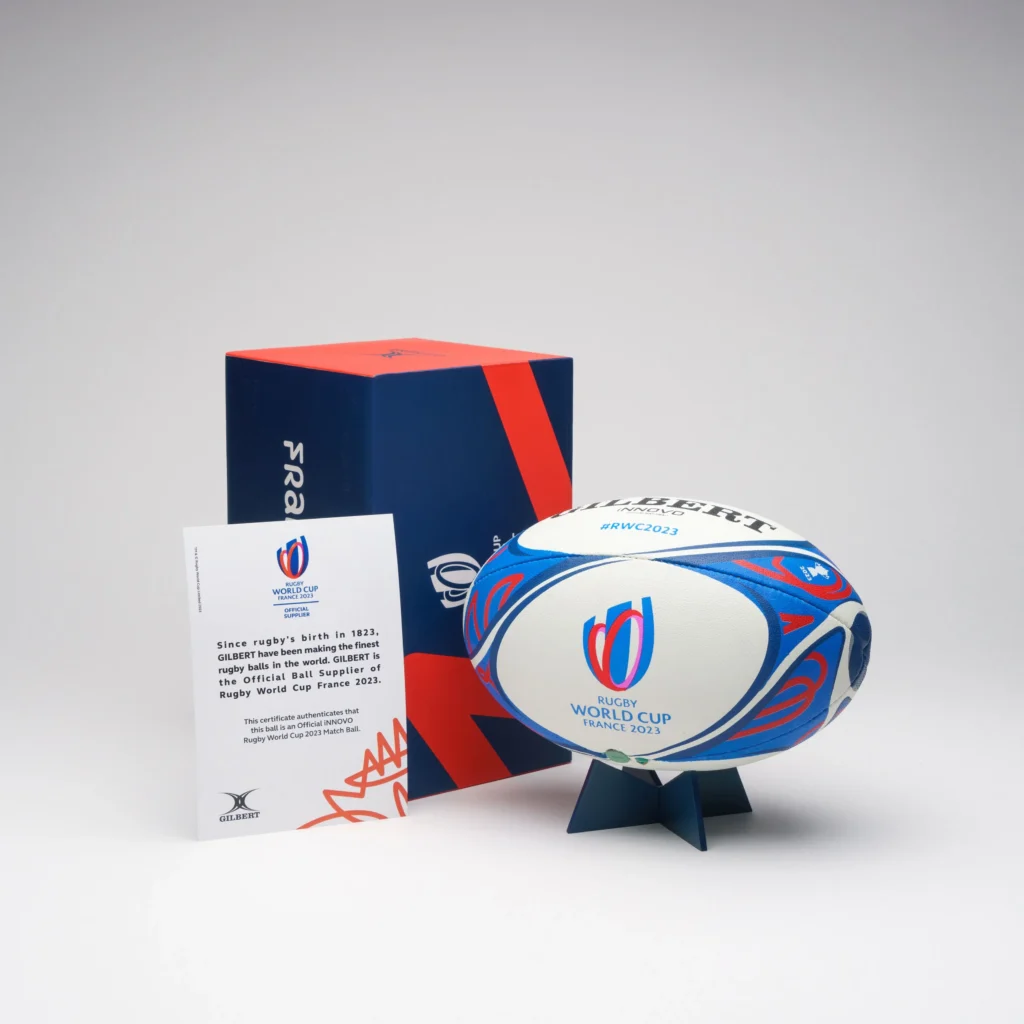The tenth edition of the 15-a-side Rugby World Cup 2023 will be staged in France from 8 September to 28 October, featuring 20 teams with a schedule of 48 matches over 51 days. It is the largest edition in the history of an event that has been played every four years since 1987. Compared to Japan 2019, the tournament will last an extra week and will involve ten transalpine cities. What makes the second French edition unique, after the first in 2007, however, is the celebration of 200 years of the oval ball sport, which first appeared in 1823 thanks to William Webb Ellis and his desire to disregard the rules of the time, starting with the first run with the ball in hand in history during a competition.
The hi-tech ball that will debut in the Cup
Besides seeing the world’s best national teams at work, such as the New Zealand All Blacks, Australia, South Africa, Argentina and the great nobles of Europe facing each other in the Six Nations (England, France, Scotland, Wales, Italy and Ireland), the World Cup will feature the use of iNNOVO, the most high-tech rugby ball ever made. Unlike in the past, the latest oval ball by Gilbert, a British manufacturer with two centuries of history and an official supplier of the World Cup since 1995, features a double valve positioned inside the seam that favours the stability, balance and rotation of the ball, continuing the transition towards a smart and connected ball, made in partnership with Sportable Technology.
Developed and patented for almost two years, iNNOVO was introduced by the company last November, initially only to teams of which Gilbert is a technical sponsor. Shortly afterwards, it was distributed to all national teams qualified for the World Cup and used in all major events in recent months to familiarise all players with its innovations.



Ireland flies with 5G thanks to Ericsson and Vodafone
The most eagerly awaited national team, apart from France playing at home, is Ireland, first in the international rankings and undefeated for 13 months. They are chasing their first Cup after never making it past the quarter-finals in the nine editions played so far. In addition to the strength of the scrum and the excellent rugby with which the Green Army won the last Six Nations, there is the 5G to put the Irish in the turbo. Thanks to the agreement signed between Ericsson, Vodafone and the Irish Football Union, the team led by Andy Farrell will be able to count on new technology for the transmission of player and match data, which is also crucial in rugby to dictate strategies and improve performance.
Rugby World Cup 2023
At the heart of the system is the 5G Standalone Mobile Private Network (MPN) solution, which, together with artificial intelligence, ensures higher download and upload speeds and lower latency, crucial factors in aiding the analysis of player performance in order to make the consequential decisions on the field supported by the information obtained in real-time. This connectivity allows up to eight high-resolution video streams to be captured using cameras and a connected drone. Tested at the Irish national team’s High-Performance Centre, the ace-in-the-hole tech is a game-changer for the coaching staff of other national teams and also marks a huge step forward for Ireland, which until now has had to rely on the WiFi network of stadiums and training facilities to monitor player performance.
The next smart oval ball
Always at the forefront when it comes to focusing on hi-tech solutions that can improve the game and the experience of the players and spectators, as evidenced by the introduction back in 2003 of the Television Match Official to assess contacts and actions that escaped the referee’s eyes, rugby is close to using the smart ball. Tracked in 3D and in real time by sensors placed around the pitch, the oval ball of the future will be able to determine its exact position up to 20 times per second, providing instant feedback on every kick, throw and pass, thus helping the match director to make accurate decisions more quickly.
As has always been the case so far, however, before reaching the highest level, the smart oval ball will be tested in minor competitions to gauge the reactions of rugby players and referees, whose opinions and suggestions can help refine the developed model.


